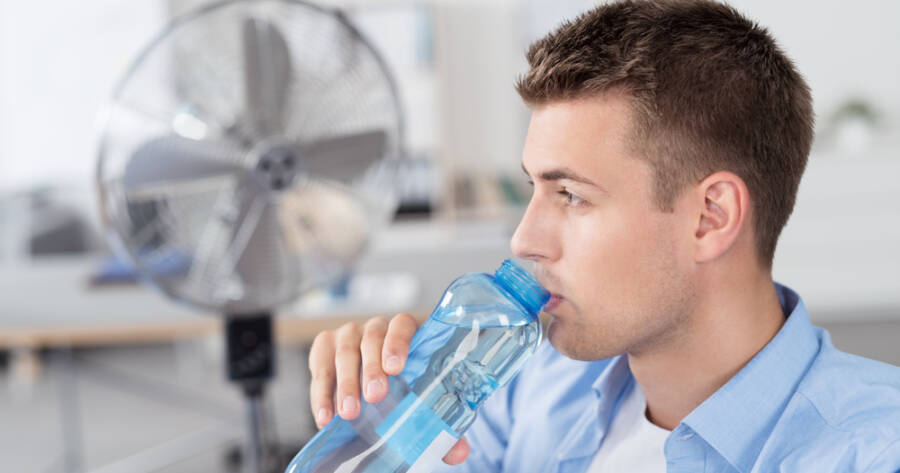As temperatures rise in the summer, keeping your home cool can become a challenge—especially if you’re trying to avoid high electricity bills. Running an air conditioner all day isn’t always an affordable option. Luckily, there are several cost-effective ways to beat the heat without overspending. With simple adjustments, you can maintain a comfortable indoor temperature while saving money.
Maximizing Natural Ventilation
One of the easiest ways to cool your home is by taking advantage of natural airflow. Opening windows strategically allows fresh air to circulate, reducing indoor heat buildup. Early mornings and evenings are the best times to let in cooler air.
To improve ventilation, place a fan near an open window to draw in cool air. Creating a cross-breeze by opening windows on opposite sides of your home helps push out warm air. If possible, keep interior doors open to promote air circulation throughout your home.
Blocking Out Sunlight
The sun’s rays can quickly heat up a room, making it harder to stay cool. Blocking out sunlight during peak hours is a simple yet effective way to maintain a lower indoor temperature. Closing blinds or curtains in sun-facing windows can significantly reduce heat buildup.
For extra insulation, consider using blackout curtains or reflective window film. These materials help deflect sunlight and keep your home cooler. If you have outdoor space, installing exterior shades or awnings over windows can provide additional sun protection.
Using Fans Effectively
Ceiling fans and portable fans can make a big difference in maintaining a comfortable indoor temperature. Unlike air conditioners, fans use less energy while still providing relief from the heat. Setting a ceiling fan to rotate counterclockwise pushes cool air downward, creating a wind-chill effect.
Box fans and oscillating fans can be placed near windows to help pull in cool air or expel hot air. If the heat is particularly intense, try placing a bowl of ice in front of a fan to create a refreshing, chilled breeze.
Cooking Smart to Reduce Heat
Using kitchen appliances like ovens and stovetops can generate unnecessary heat, raising indoor temperatures. During hot summer months, consider switching to alternative cooking methods. Using a microwave, slow cooker, or air fryer reduces heat buildup while still allowing you to prepare meals.
Grilling outdoors is another great way to keep your home cool. Not only does it prevent heat from staying inside, but it also provides an opportunity to enjoy fresh air. If possible, plan meals that require little to no cooking, such as salads or cold sandwiches.
Optimizing Your Home’s Insulation
Good insulation isn’t just useful for keeping your home warm in winter—it also helps maintain a cooler indoor environment in summer. Properly sealing doors and windows prevents hot air from seeping in and cool air from escaping.
Applying weatherstripping or caulking around windows and doors is an affordable way to improve insulation. Adding thermal curtains or insulated window coverings can also help trap cool air inside. If you have an attic, ensuring proper insulation can prevent excessive heat from building up and spreading throughout your home.
Adjusting Your Daily Habits
Simple lifestyle changes can help lower indoor temperatures without added expenses. Running heat-producing appliances like dishwashers, laundry machines, and dryers during cooler hours reduces unnecessary heat buildup. Evening or early morning is the best time for these activities.
Taking cooler showers and keeping lights off in unoccupied rooms can also contribute to a more comfortable indoor environment. Incandescent bulbs generate heat, so switching to LED lights is an energy-efficient way to reduce heat output.
The Best Affordable Cooling Solutions
While air conditioning provides instant relief, it isn’t always budget-friendly. If you don’t want to rely solely on an AC unit, there are other low-cost cooling solutions available.
Evaporative coolers, also known as swamp coolers, use water evaporation to lower temperatures. These units work best in dry climates and use less energy than traditional air conditioning. Portable air conditioners can also be an alternative for cooling specific areas of your home rather than running a central system.
Staying Cool Without Overspending
Keeping your home cool in the summer doesn’t have to be expensive. By maximizing natural ventilation, blocking sunlight, using fans effectively, and adjusting daily habits, you can reduce indoor temperatures without increasing your energy bill.
Simple changes, such as improving insulation and choosing smart cooking methods, can make a significant difference. With these cost-effective strategies, you can stay comfortable all summer long while saving money.

